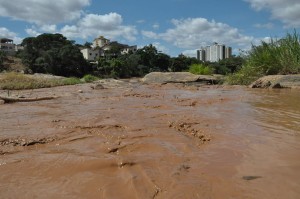by DGR Colorado Plateau | Nov 27, 2015 | Biodiversity & Habitat Destruction, Colonialism & Conquest
By Interamerican Association for Environmental Defense via Intercontinental Cry
Image: Mural in São Paulo, Brazil (Photo: Monica Kaneko/flickr). Some Rights Reserved
Altamira, Brazil. The Brazilian Institute of Environment and Renewable Natural Resources (IBAMA) on Tuesday authorized the Belo Monte Dam’s operating license, which allows the dam’s reservoirs to be filled. The authorization was granted despite clear noncompliance with conditions necessary to guarantee the life, health and integrity of affected communities; the same conditions that IBAMA called essential in its technical report of September 22. IBAMA’s decision makes no reference to conditions needed to protect affected indigenous peoples.
“We can’t believe it,” said Antonia Melo, leader of Movimiento Xingú Vivo para Siempre, who was displaced by the dam’s construction. “This is a crime. Granting the license for this monster was an irresponsible decision on the part of the government and IBAMA. The president of IBAMA was in Altamira on November 5 and received a large variety of complaints. Everyone – riverside residents, indigenous representatives, fishermen, and members of the movement – talked about the negative impacts we’re living with. And now they grant the license with more conditions, which will only continue to be violated.”
In an official letter to IBAMA on November 12, the president of the National Indian Foundation (FUNAI) concluded that conditions necessary for the protection of affected indigenous communities had clearly not been met. However, he gave free reign for the environmental authority to grant the operating license “if deemed appropriate.”
“The authorization clearly violates Brazil’s international human rights commitments, especially with respect to the indigenous communities of the Xingú River basin. Those affected populations are protected by precautionary measures granted in 2011 by the Inter-American Commission on Human Rights, which the Brazilian government continues to ignore,” said María José Veramendi, attorney with the Interamerican Association for Environmental Defense (AIDA).
The license allows for the filling of two of the dam’s reservoirs on the Xingú River, an Amazon tributary. It is valid for six years and is subject to compliance with certain conditions; progress will be monitored through semiannual reports. Such conditions should have been met before the dam’s license was even considered, let alone granted.
“Environmental licensing is a way to mitigate the effects, control damage and minimize the risks that the dam’s operation entails for the community and the environment. By disrespecting and making flexible the licensing procedures, the government is allowing economic interests to prevail and ignoring its duty to protect the public interest,” said Raphaela Lopes, attorney with Justiça Global.
AIDA, Justiça Global, and the Para Society of Defense of Human Rights have argued on both national and international levels that the conditions needed for Belo Monte to obtain permission to operate have not been met. The project must still guarantee affected and displaced populations access to essential services such as clean water, sanitation, health services and other basic human rights.
“The authorization of Belo Monte, a project involved in widespread corruption scandals, contradicts President Rousseff’s recent statement before the United Nations, in which she declared that Brazil would not tolerate corruption, and would instead aspire to be a country where leaders behave in strict accordance with their duties. We hope that the Brazilian government comes to its senses, and begins to align its actions with its words,” said Astrid Puentes Riaño, co-director of AIDA.
The green light for Belo Monte couldn’t have come at a worse moment. On November 5th, two dams impounding mine waste—owned by Samarco, a company jointly overseen by Vale and BHP Billiton—broke in the city of Mariana, Minas Gerais, causing one of the greatest environmental disasters in the country’s history. A slow-moving flood of mud and toxic chemicals wiped out a village, left 11 dead and 12 missing, and affected the water supply of the entire region, destroying flora and fauna for hundreds of miles around. The toxic flood has since reached the sea. The company’s operating licenses had expired two years ago.
Approval of Belo Monte’s operating license comes just six days before the start of the Paris climate talks, the most important meeting of the United Nations Framework Convention on Climate Change in recent history. Once in operation, Belo Monte will emit greenhouse gases including carbon dioxide and methane; as the world’s third-largest dam, it will become a significant contributor to climate change.
By authorizing Belo Monte, the government of Brazil is sending a terrible message to the world. Ignoring its international commitments to protect human rights and mitigate the effects of climate change, the government is instead providing an example of how energy should not be produced in the 21st Century.

by Deep Green Resistance News Service | Nov 12, 2015 | Strategy & Analysis
by Clay Cochran / Deep Green Resistance
“The woods are lovely, dark and deep,
But I have promises to keep,
And miles to go before I sleep,
And miles to go before I sleep.”
-Robert Frost
President Obama announced Friday morning that he has denied TransCanada’s permit application to build the Keystone XL (KXL) oil pipeline in the U.S. Many in the mainstream environmental movement hailed this as a positive seismic shift in public policy and public perception, and a harbinger of the inevitable saving of our planet. Were it only that simple. Unfortunately, although the denial of the KXL build is in itself a good result, it carries with it some insidious dangers to the continuation of the fundamental work of saving this planet.
It is understandable that many think Obama’s denial of the KXL is a huge victory for the environment. Sadly, that view is myopic, and typical of the wishful thinking hampering the environmental movement around the world. The denial of the KXL does not accomplish what we ultimately need: the shutting down of the entire industrial, fossil-fuel driven society murdering the planet.
Unfortunately, the history of the environmental movement has many incidences where small victories have caused a loss of focus on the big picture, or otherwise misdirected us into falsely believing the one-off accomplishment sufficient to save our planet. Make no mistake, we must be ever vigilant not to let the leaders of industrial civilization (i.e. the greedy, patriarchal, conscious-less ‘leaders of industry’ and their paid-for politicians and mainstream media) characterize the globally suicidal events that are unfolding. They will always use a deceptive framework supporting their relentless need for unsustainable expansion, and lead many into losing sight of the ecologically desperate times that we are facing.
Deep Green Resistance believes the only way our planet can be saved for all species is for the current patriarchal and industrial civilization to be immediately dismantled. We also believe there is grave danger in premature self-congratulation for small accomplishments that seemingly are a win for the environment, but in truth do nothing to alter the existing paradigm of corporate power or slow the inevitable march towards unsustainable expansion and the murder of the planet. Simply stated, the processes that have been put in motion ― runaway climate change, population overshoot due to industrial agriculture, species extinctions, and ‘resource’ extraction ― are far too developed to be stopped by any means that allows the industrial complex to remain in existence.
In the book Deep Green Resistance, co-author Lierre Keith writes
”The culture of the left needs a serious overhaul. At our best and bravest moments, we are the people who believe in a just world; who fight the power with all the courage and commitment that women and men can possess; who refuse to be bought or beaten into submission, and refuse equally to sell each other out. The history of struggles for justice is inspiring, ennobling even, and it should encourage us to redouble our efforts now when the entire world is at stake. Instead, our leadership is leading us astray.”
Our leadership continues to lead us astray. President Obama gives lip service to his concern for global climate change guiding this KXL denial decision, but the truth is hidden in his message. According to a Scientific American article, among his reasons for rejection were that
…the pipeline would not make a meaningful long-term contribution to the U.S. economy, nor would it increase U.S. energy security or help to lower gas prices, which have already declined dramatically over the last year.
With these criteria for making his decision, we’re clearly not ready to take a victory lap for the environmental awakening of the global leadership.
Also in the DGR book, the authors discuss Lester Brown’s Plan B: Mobilizing to Save Civilization, pointing out that “although Mr. Brown is to be [commended] for understanding that the problems our planet is facing are systemic and interrelated, [his plan] unfortunately falls prey to what many other ‘plans’ do; it leaves the overlapping accelerants of capitalism, industrialization, and civilization in place.”
With the KXL decision in the news, it is critical to keep in mind the myriad disastrous ‘projects’ which continue unabated. As the DGR authors warn, these other projects evidence the hard truth that, so far, the work of the environmental movement has indeed left capitalism, industrialization, and civilization firmly in place. That three-headed monster has no intention of voluntarily leaving us to salvage what is left of our biosphere, so we are left with no other alternative than to terminate it ourselves, and with extreme prejudice.
A recent article in the Financial Post states:
While TransCanada Corp. has been cooling its heels on its Keystone XL proposal for the past six years, the oil pipeline business has been booming in the United States. Crude oil pipeline mileage rose 9.1 per cent last year alone to reach 66,649 miles. […] Between 2009 and 2013, more than 8,000 miles of oil transmission pipelines have been built in the past five years in the U.S., […] compared to the 875 miles TransCanada wants to lay in the states of Montana, South Dakota and Nebraska for its 830,000-bpd project. By last year, the U.S. had built 12,000 miles of pipe since 2010.
[AOPL spokesperson John Stoody said] “While people have been debating Keystone in the U.S. we have actually built the equivalent of 10 Keystones. And no one’s complained or said anything.”
A Climate Central article discusses the many alternative plans already developed to transport the tar sands of Canada:
As a way around those challenges, other pipelines are in the works. One pipeline is already operating and sending hundreds of thousands of barrels of tar sands bitumen to Texas every day.
Experts, such as Stephen Kelly, a former U.S. diplomat and a visiting professor of public policy and Canadian studies at Duke University, say that the long-term outlook for Canadian oil sands production is not closely linked to the fate of Keystone XL.
“Canada has ample financial incentive to find ways to get its oil to world markets, and it’s likely to find ways to build pipelines to its coast, despite opposition,” he said last year.
 The Keystone XL decision and its accompanying self-congratulations should be a warning to us all not to lose sight of the big picture. The Keystone XL alternatives do face opposition in Canada from overlapping groups of climate activists, grassroots environmentalists concerned about local impacts, and First Nations peoples, with the Unis’tot’en Camp a prime example of a coalition for active on-the-ground resistance. We must remain vigilant in fighting pipelines and other infrastructure expansion projects wherever they’re proposed, and be skeptical of any misdirection from the fundamental work of ending the industrial-patriarchal complex.
The Keystone XL decision and its accompanying self-congratulations should be a warning to us all not to lose sight of the big picture. The Keystone XL alternatives do face opposition in Canada from overlapping groups of climate activists, grassroots environmentalists concerned about local impacts, and First Nations peoples, with the Unis’tot’en Camp a prime example of a coalition for active on-the-ground resistance. We must remain vigilant in fighting pipelines and other infrastructure expansion projects wherever they’re proposed, and be skeptical of any misdirection from the fundamental work of ending the industrial-patriarchal complex.
There is some good news. Deep Green Resistance believes that the insanity of the industrial planet-killing machine can be stopped. We believe that a sustainable and just world can be achieved, and we can transition away from being a consumer society. The Deep Green Resistance strategy of Decisive Ecological Warfare (DEW) is a recognition of the scope of what is at stake (the planet); an honest evaluation of the potential for a mass movement (none); and an assessment that industrial civilization depends on highly vulnerable infrastructure.
DEW keeps front-and-center the understanding that there will be no comprehensively successful environmental actions if we allow the current industrial framework to remain in existence. The people in power who are driving 200 species to extinction each day have no qualms about leading humans to the same fate, and show no signs of voluntarily altering their behaviors. It is well past time to make them stop.
I urge you to take a look at the Deep Green Resistance website and to reflect on the future of this planet. The Decisive Ecological Warfare strategy is multifaceted and needs your help, with work to be done wherever your skill set and interests lead you. Get involved and save our home.
If you’d like to read more analysis like this, and news of grassroots resistance to environmental destruction, sign up at the upper left of this page to receive email notifications of new posts.
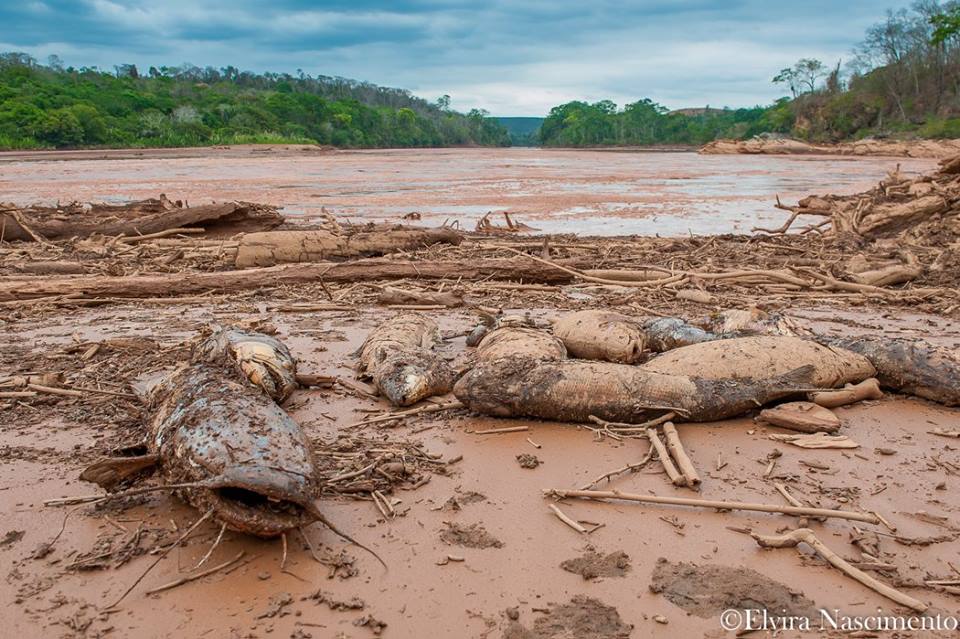
by Deep Green Resistance News Service | Nov 11, 2015 | Biodiversity & Habitat Destruction, Mining & Drilling, Toxification

Elvira Nascimento
Cyntia Beltrão reports from Brazil on what may be the country’s worst environmental disaster ever, at the Samarco open pit project jointly owned by Vale and BHP Billiton:
Last Thursday, November 5th, two dams containing mine tailings and waste from iron ore mining burst, burying the small historic town of Bento Rodrigues, district of Mariana, Minas Gerais state. The village, founded by miners, used to gain its sustenance from family farming and from labor at cooperatives. For many years, the people successfully resisted efforts to expel them by the all-powerful mining company Vale (NYSE: VALE, formerly Vale do Rio Doce, after the same river now affected by the disaster). Now their land is covered in mud, with the full scale of the death toll and environmental impacts still unknown.
Officially there are almost thirty dead, including small children, with several still missing. The press and the government hide the true numbers. Independent journalists say that the number of victims is much larger.
The environmental damage is devastating. The mud formed by iron ore and silica slurry spread over 410 miles. It reached one of the largest Brazilian rivers, the Rio Doce (“Sweet River”), at the center of our fifth largest watershed. The Doce River already suffers from pollution, silting of margins, cattle grazing in the basin land, and several eucalyptus plantations that drain the land. This year Southeastern Brazil, a region with a normally mild climate, endured a devastating drought. Authorities imposed water rationing on several major cities. Meanwhile, miners contaminate ground water and exploit lands rich in springs. The Doce River, once great and powerful, is now almost dry, even in its estuary. The mud of mining waste further injures the life of the river.
We do not know if the mud is contaminated by mercury and arsenic. Samarco / Vale says it isn’t, but we know that its components, iron ore and silica, will form a cement in the already dying river. This “cement” will change the riverbed permanently, covering the natural bed and artificially leveling its structure. The mud is sterile, and nothing will grow where it was deposited. A fish kill is already occuring. We do not know the full extent of impacts on river life or for those who depend on the river’s waters.
Soon the dirty mud will reach the sea, where it will cause further damage, to the important Rio Doce estuary and to the ocean.
 Some resources in Portuguese to learn more and get active:
Some resources in Portuguese to learn more and get active:
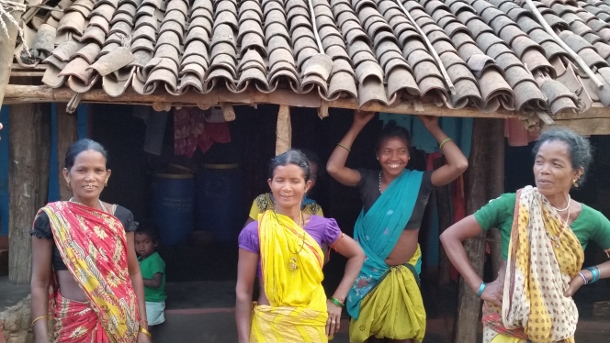
by DGR Colorado Plateau | Nov 7, 2015 | Colonialism & Conquest, Human Supremacy, Indigenous Autonomy, Indirect Action
In early October, news emerged that India’s Ministry of Environment, Forest and Climate Change was blocking the implementation of a high-level government panel’s report on tribal rights that recommended the creation of stringent rules to safeguard indigenous people from displacement. Meanwhile, two state governments have begun implementing a much different set of guidelines — issued in August without any interference — that allow the private sector to manage 40 percent of forests for profit at the expense of indigenous forest dwellers. In addition, another ordinance passed this year will permit private corporations to easily acquire land and forests from indigenous communities and carry out ecologically harmful mining. These legislative and policy decisions are usually made without the knowledge of indigenous communities whose lives, livelihoods and ecosystems will be worsened by these irresponsible actions of the government. Hence, indigenous communities in Uttar Pradesh, a northern state and Odisha, in the east, are strengthening their organizing to protect their rivers, lands, forests and hills from “development” that would displace thousands of local residents and destroy the environment.“People from my community and I were beaten, detained or jailed unnecessarily for opposing tree felling in our forests, some years ago,” said Nivada Debi, a feisty 38-year-old woman from the Tharu Adivasi community in Uttar Pradesh. “We visited the police station multiple times for their release. The government did not assist the injured. Despite the police and government indifference, we will fight for our land and environment.”A mother of four children subsisting on the forests, Debi is active in grassroots resistance that started nearly 20 years ago and has grown into the All India Union of Forest Working People, or AIUFWP. The group is made up of many indigenous people who subsist on forests and are collectively protecting forests from poachers and encroachers.

Debi was among hundreds — from the AIUFWP, the allied Save Kanhar Movement and other resistance groups — who traveled to Lucknow in July 2015 for a rally protesting the continued incarceration of their comrades fighting land grabbing in other districts of Uttar Pradesh. Roma Malik, the AIUFWP deputy general secretary, and Sukalo Gond, an Adivasi, which means original inhabitant, were among those arrested on June 30, before they were to address a large public gathering about the illegal land acquisition for the Kanhar dam and the violent repression of its opponents by the state. Another member of AIUFWP, Rajkumari, who prefers to go by her first name, was jailed on April 21, after 39 Adivasis and Dalits, who are considered outside the caste hierarchy, were brutally shot at by the police during a peaceful protest on April 18. The demonstration, which began on April 14 — the birthday of B.R. Ambedkar, the architect of the Indian constitution and an icon for many Indians, particularly Dalits — was opposing the construction of a dam across the Kanhar river in the Sonbhadra district of southeastern Uttar Pradesh.
Rajkumari was released toward the end of July while Gond and Malik were freed in September. However, others are still imprisoned on fabricated charges. Courts are delaying hearing their cases or denying them bail.
AIUFWP members, some of whom were previously involved with other local resistance movements, have been actively opposing the construction of the Kanhar dam for years. It would submerge over 10,000 acres of land from more than 110 villages in Uttar Pradesh and the neighboring states of Chattisgarh and Jharkhand, displacing thousands of local people and disrupting their lives and livelihoods. The dam was approved by the Central Water Commission of India in 1976, but was abandoned in 1989 after facing fierce opposition, especially from the local people whose lives and ecosystem would be destroyed by the proposed dam. However, construction resumed in December 2014, violating orders to stop it from the National Green Tribunal — a government body that adjudicates on environmental protection, forest conservation and natural resource disputes. No social impact assessment was done, nor were the necessary environmental or forest clearances — mandated by the Forest Conservation Act — obtained by the state government.
“Since this dam can destroy our survival and also adversely impact the surroundings, we have been opposing its construction and related land acquisition for many years,” said Shobha, a determined 42-year-old Dalit. “On December 23, 2014, the police caned some of our comrades when we were peacefully protesting the revival of building the dam earlier that month. However, the police falsely accused some leaders of our struggle of attacking the sub-divisional magistrate.” Shobha, who also prefers to go only by her first name, is among the vocal leaders of a women’s agricultural laborers union, which has allied with AIUFWP, in the village of Bada.
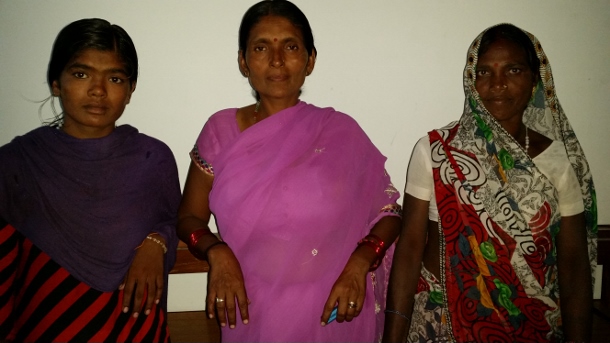
Around 400 miles from Sonbhadra, in the Kalahandi and Rayagada districts of southern Odisha, live the Dongria Kondhs, an indigenous community of over 8,000 people. They have been fighting tirelessly to protect their sacred mountain, the nearly 5,000-foot high Niyamgiri, from large private corporations — like Vedanta Limited — that are trying to mine bauxite in the area to produce aluminum. Supporters of the Dongria Kondhs were arrested in Delhi on August 9 outside the Reserve Bank of India, as they peacefully highlighted Vedanta’s illegitimate and harmful mining in the Niyamgiri. Vedanta’s mining would violate the Forest Rights Act, which states that indigenous communities are entitled to remain in the forests — and utilize the produce, land and water in the forests — while conserving and protecting them.
“The Niyamgiri symbolizes a parent to our community,” said Sadai Huika, a steadfast 45-year-old Dongria Kondh woman from Tikoripada village. “While the streams that originate from it help our farming, the plants and grass that grows on it feed our cattle and goats. We cannot exist without it and will safeguard it from anyone trying to harm it.”
Huika and people from hundreds of villages near the Niyamgiri are active members of the Niyamgiri Protection Forum, which originated around 2003 to resist attempts by Vedanta to begin mining where the Kondhs live, with the support of the Odisha state government. At every one of the 12 village council meetings with government officers held in 2013 atop the Niyamgari, community members stated that they would not allow mining nearby.
Kumuti Majhi, an elderly Dongria Kondh man and one of the forum’s leaders, is among the few people who have traveled within and outside Odisha to advocate against mining and garner vital support for their struggle. He has met ministers to explain how significant the Niyamgiri is to his community and their reasons for safeguarding it.
By organizing protests locally and with allies around the world — and meetings with Vedanta’s shareholders and empathetic government officials, who the forum has enlightened about the need to protect the Niyamgiri — the group has stalled the mining.
“We know that extracting bauxite from the Niyamgiri will pollute our environment and also affect all living beings here,” Majhi said. “Hence, we will stop anyone coming to plunder the Niyamgiri, despite police harassment and false charges against us and our families.”
Pushpa Achanta is a Bangalore-based freelance journalist, blogger and writer on development and human interest issues. She is the lead author of a book titled Ripples: The Right to Water and Sanitation for Whom, published in July 2013 by the Indian Social Institute in Bangalore. Her articles have appeared in collections of essays and features on different subjects. She also enjoys penning verse, taking nature photography and mentoring youth.
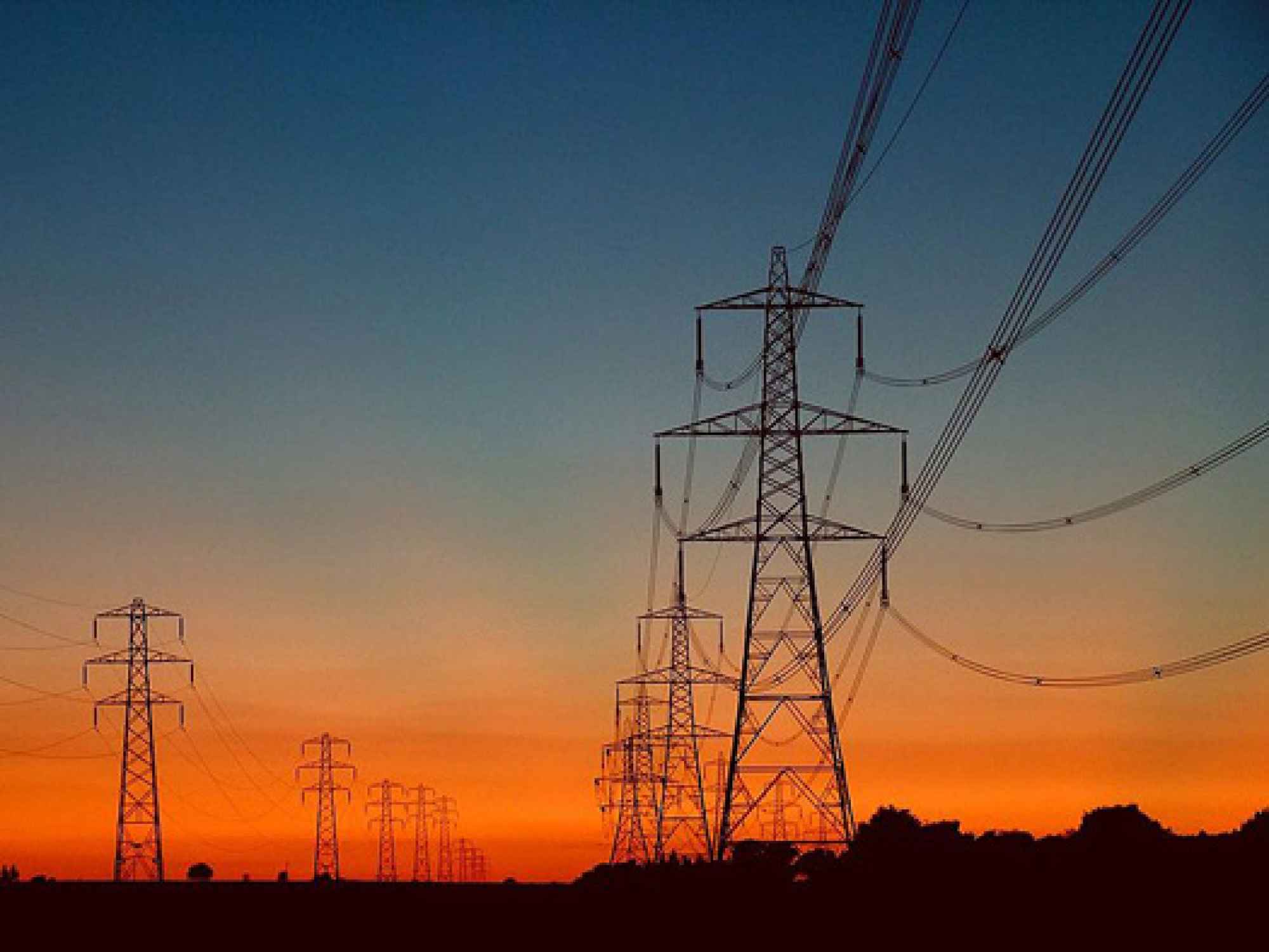
by DGR Colorado Plateau | Nov 5, 2015 | Property & Material Destruction
By Telesur
Venezuelan Energy Minister Luis Motta Domínguez reported that more than a dozen attacks had taken place in less than a week.
Venezuelan Electrical Energy Minister Luis Motta Dominguez reported that 13 attacks on Venezuela’s electrical grid took place over the last week, in an attempt to destabilize the Dec. 6 National Assembly elections.
Motta Dominguez presented the information at a press conference on Monday.
“The electrical system in the 18 days of October has received 13 attacks, 13 acts of sabotage, which also destabilizes the system,” he said. “They are intended to disturb and disrupt the elections on December 6.”
Dominguez said that “in previous elections, there were power outages just two days before the elections, and they are repeating the pattern.”
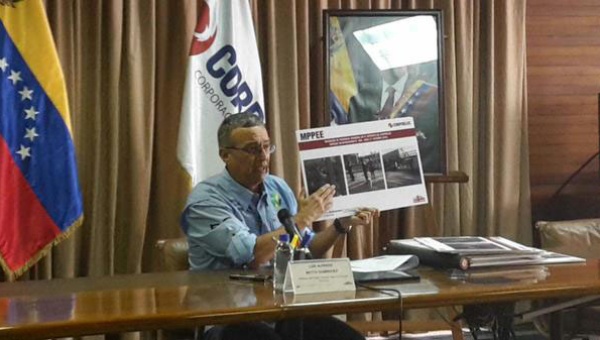
The minister of electrical energy reported the intrusion of armed people in the Corpoelec depot. | Photo: @MPPEE
According to Motta Dominguez the sabotage began on October 13 at a power plant in Zulia state, located in the northwestern corner of the country, where they cut part of the wiring. The owner showed pictures explaining a failure in the Guyana A line.
“The next attack was in Falcon (located in the northwest of the country), where a citizen was found manipulating a power transformer,” Motta Dominguez said. He also reported three attempts to hack the official website of Corpoelec, the state corporation responsible for Venezuelan power.
The minister reported an explosion and fire in a power transformer in Tachira – located in the Andes mountains, to the southwest of the country – which has affected two electrical substations. It was determined that the damage was caused by two bullet holes, leaving the people of Tachira without 200 megawatts of energy.
“Note that all the attacks are concentrated in Falcon, Zulia and Tachira, all border states,” he concluded. “It is no accident.”
Read more at: Massive Electrical Sabotage Reported in Venezuela






